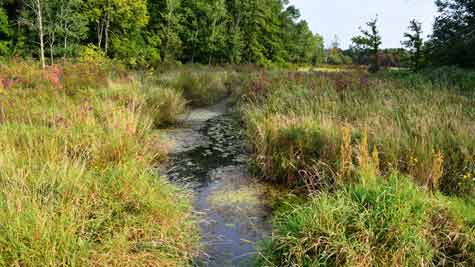The U.S. EPA created American Wetlands Month in 1991 to celebrate the vital importance of wetlands to the nation’s ecological, economic, and social health and to educate Americans about the value of wetlands as a natural resource.

Wetlands are critical to watershed health and water quality. Wetlands filter and clean polluted runoff, intercept and absorb flood water, and release that water slowly into creeks, rivers, and lakes as cool, constant groundwater. Many of the wetlands and marshes in the Huron River watershed have been dredged, drained, and filled to allow for agriculture and development. The Huron River has lost an estimated two-thirds of its wetlands to agricultural, industrial and residential development.
In the Huron River watershed, a study of the Economic Impact of the Huron River by Grand Valley State University found that the ecological services provided by the wetlands, forests, and floodplains along the main stem of the river (not including tributaries or upland areas) are worth $150 million annually. There are just over 36,000 acres of wetlands in the half mile (800 meters) area next to the river’s main stem.
The wetlands of the Huron River watershed have even served a role in the science of immunology. In 2008, HRWC published a newsletter article in the winter edition of the Huron River Report about how wetlands and massassauga rattlesnakes helped inform the development of an anti-toxin for diptheria. Check it out–this is eerily related to our current situation with the Coronavirus/COVID-19.



